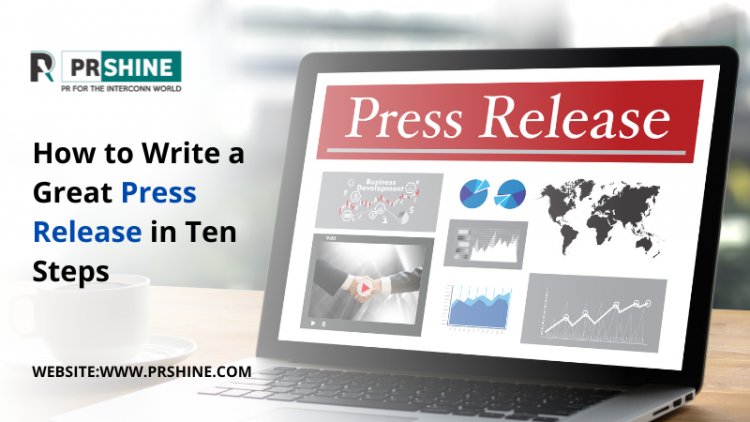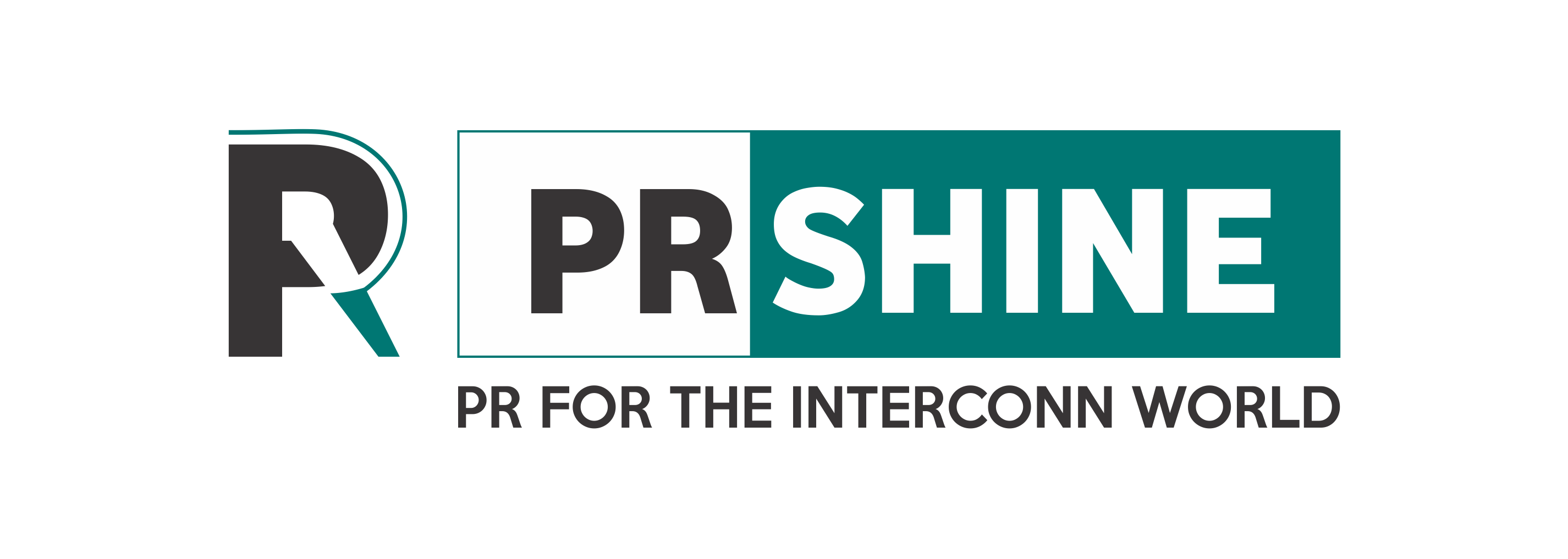How to Write a Great Press Release in Ten Steps
It's typical to write a blog post, post the news on social media, and even send out an email when something significant occurs in your company. These are excellent, but one thing that companies frequently overlook is the press release.

It's typical to write a blog post, post the news on social media, and even send out an email when something significant occurs in your company. These are excellent, but one thing that companies frequently overlook is the press release.
Press releases can broaden your audience, generate leads, and even help you establish relationships with key media outlets.
What is a Press Release?
An important story or statement that is distributed to members of the news media is typically referred to as a press release. The who, what, why, when, where, and how of the information are all covered in the press release. A heading, intro, body, boilerplate, and other specific structural components make up a press release.
What is a Press Release Used For?
Press releases are frequently used in business to announce partnerships, events, organisational changes, new hires, new products, or anything else that is thought to be newsworthy. A press release's objective is to disseminate its contents to a target audience in the most objective manner possible.
Press releases are a great way to tell the world about the great things your business is doing, from announcing new products, events, or hires to introducing a partnership with a community organisation.
How to write a good press release
When spending the time to write a press release, you want to ensure that the outcomes are worthwhile for your team. Here's how to craft a strong press release that contains all the necessary details:
1. Choose the Correct Language
When learning how to write a press release, the first thing to think about is the language you use. Some press releases announce information that must be released immediately and are hurried. In this instance, the release should begin with the words "FOR IMMEDIATE RELEASE." A press release for a future event can also be written in advance; just remember to include the date and use the words "HOLD RELEASE UNTIL" at the top of the document.
This is the best way to control when your press release is read by the public and the media. You can let journalists and readers know when you are prepared for the information to print or be released by selecting a specific publish date for your news release. The timing of your press release distribution can have a big impact on how well you’re content marketing campaign performs.
2. Keep the company's colors and logo consistent.
Making a press release is one of the crucial times you should use the brand and logo you've worked so hard to develop that customers associate with your products. When thinking about how to write a press release, branding is essential. The headline section should always include your company's colors and logo.
3. Keywords
To try and increase your reach organically, you should have keywords selected before writing your press release. To make your release accessible and rank higher with search engines, keywords are essential. Additionally, they can aid readers and the media in understanding the theme and information contained in the press release.
Avoid stuffing too many keywords into the content; instead, place them naturally throughout it. A limited number of targeted keywords and/or outbound links are permitted on many online distribution platforms for press releases. Make sure to pick them carefully.
Press Release Title Tips
You should use title case for the headline of the press release. This means that unless it's a preposition, any word in your headline with four letters or more needs to be capitalised (for, on, after). Additionally, you ought to attempt to include one of your main keywords in this headline. A good illustration of using both title case and a keyword in your press release is shown in the image below from Intel India Opens New Facility in Bengaluru:
Press release headlines should not exceed 160 characters, including spaces, to allow readers to quickly scan the content and decide whether or not to read further.
4. Include a Strong Summary Paragraph
The summary paragraph appears in the first paragraph of a press release. Several significant purposes and rules are present in this paragraph:
- Five sentences or fewer
- Give the reader a synopsis of the press release's contents and pique their interest to read it.
- Include bullet points at the top to grab the attention of journalists skimming through a sea of press releases.
- Include the most interesting and pertinent details in addition to the key points.
Readers are more likely to keep reading a press release if they find value in it right away. This is your opportunity to capture their interest and guarantee greater press release visibility.
5. Important Information to Include
You need to include a few very specific details that help you target the audience for your press release's main points. This frequently comes down to a regional demographic. Press releases should always be linked to a specific location, even if they are distributed globally. Therefore, the month, day, year, city, and state must be included in every press release. Local knowledge is required to give readers the date and time of your release and to contextualize the information.
See the press release example below of Intel:
6. Writing the First Paragraph of Your Press Release
The first paragraph of the press release serves as the lead and should include six elements: who, what, why, when, where, and how.
- Who: Who are the key individuals, who is the organisation, and who is the subject of the release?
- What is your topic, and why is it important to readers?
- Why: What made you decide to release a press release at this time, and how will it impact the readers?
- When: When is the product release, the new hire, or the other event happening?
- Where: Where is your company located or where is the event taking place?
- How does your publication benefit readers and offer a worthwhile experience?
If readers can identify these elements in the first paragraph, they will be better able to understand the press release's overall message. These six essential elements are adequately covered in the first paragraph of the press release example from Sephora given above.
7. The Body of the Press Release
The body of the press release should elaborate on the information in the first paragraph. Make sure paragraphs are cohesive and keep them to three or four sentences. Every paragraph should flow into the next without interruption, even though there should be a clear break in the information.
The body of the press release is your opportunity to highlight noteworthy developments, such as improvements the organisation has made, a recent discovery, a new hire, or a new product. Use any quotes you may have at this point. They give your press release credibility and provide readers with an unbiased opinion from a professional.
But keep in mind to keep the body concise. People are only really interested in the facts because this is still a news release. Readers may become disinterested if this section of the press release is overly poetic or explanatory. Consider creating a companion blog on your website to elaborate on any additional information your devoted readers might want to know about in order to provide a more thorough explanation of the newsworthy item.
8. Your Concluding Paragraph
In all reality, you can approach learning how to write a press release just like you would any other type of content. Your objective is to grab the reader's attention right away, give them interesting, accurate, and relevant information in the body, and then tie everything together with a strong conclusion. Your conclusion is the equivalent of your closing remarks in a speech. Any pertinent details that didn't fit in the release's body should also be included here.
Your press release's final paragraph provides your reader with a bridge to the next action. It might be as easy as getting in touch with a new manager or trying out a new product. It's a great place to include knowledgeable commentary and quotes that encourage the reader to find out more about what you are announcing.
9. Boilerplate Information about the Company
A concise synopsis of the company's details should be included in the boilerplate of the press release. Include accomplishments and merits in this section, but avoid sounding like you're trying to sell or promote the business. Journalists can provide readers with context for their reading by using this information. Additionally, it gives your business a more polished and recognisable sound.
Essentially, this is your elevator pitch, which establishes your distinctiveness and allows you to briefly describe the nature of the business and its core values.
10. Contact Information
A press release should include information on how to get in touch with you since it's a way to draw clients and media attention. Make sure your contact information is always accurate and up to date. At least a few of the following should be present:
- Contact information, including a phone number and email address;
A phone number and email address for contacting you;
- A website link for the business
Learning how to write press releases can be overwhelming when you're first starting out. The average writer might find it intimidating given how crucial they are to your business. In actuality, writing your own press releases can be enjoyable and simple if you stick to the formula above and give yourself some leeway to add a little creativity and details to your sentences.
We can write a press release for you if you need one but don't want to have to do it yourself. Check out our writing services for press releases.












